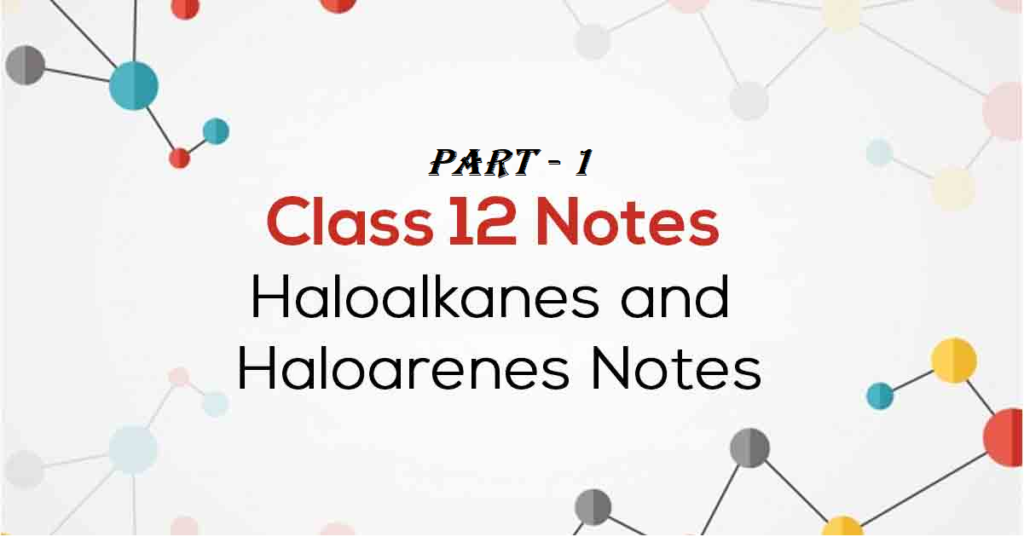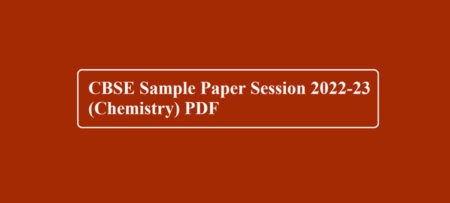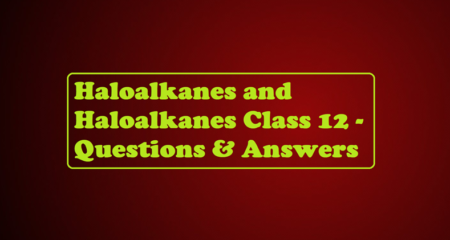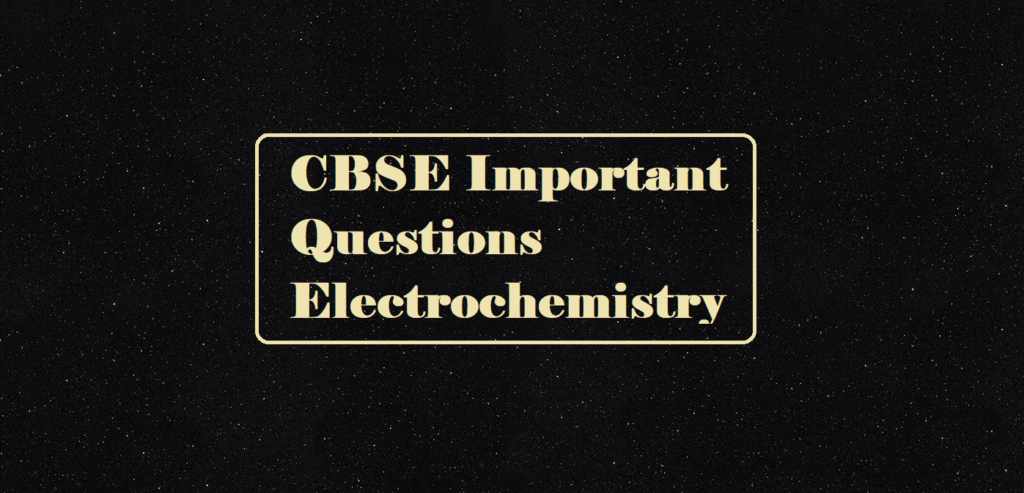Chapter – 10
Haloalkanes and Haloarenes
Haloalkanes and Haloarenes
Syllabus:
Introduction to Haloalkanes and Haloarenes
Classification
On the basis of the number of halogen atoms
Compounds containing sp3 C-X bond
Compounds having sp2 C-X bond
Nomenclature
Nature of C-X Bond C-X Bond
Methods of preparation
From Alcohols
From Hydrocarbons
Halogen Exchange
Physical Properties
Chemical Reactions
Nucleophilic substitution reactions
Elimination reactions
Reaction with metals
Reactions of Haloarenes
Nucleophilic substitution
Electrophilic substitution reactions
Reaction with metals
Polyhalogen Compounds
Dichloromethane (Methylene chloride)
Trichloromethane (Chloroform)
Triiodomethane (Iodoform)
Tetrachloromethane (Carbon tetrachloride)
Freons
p,p’-Dichlorodiphenyltrichloroethane(DDT)
Haloalkanes and Haloarenes
(1) Introduction:
The replacement of hydrogen atom(s) in a hydrocarbon, aliphatic or aromatic, by a halogen atom(s) results in the formation of alkyl halide (haloalkane) and aryl halide (haloarene), respectively.
These are compounds containing halogen atoms attached to an alkyl or aryl group. The general representation of haloalkanes is R-X and that of haloarenes is Ar-X [where X = F, Cl, Br, I].
These classes of compounds find wide applications in industry as well as in day-to-day life. They are used as solvents for relatively non-polar compounds and as starting materials for the synthesis of a wide range of organic compounds.
(2) Classification:
Haloalkanes and haloarenes may be classified as follows:
On the Basis of Number of Halogen Atoms: Alkyl halides and aryl halides both are classified as mono-, di-, tri- or polyhalogen derivatives depending on the number of halogen atoms present in their structure.
Mono-halogen compounds contain only one halogen atom, dihalo-compounds contain 2 halogen atoms and poly-halogen compounds contain more than 2 halogen atoms.
C2H5X —— Mono-halogen Compound
XCH2 – CH2X ——- Di-halogen Compound
XCH2 – CHX – CH2X ——- Poly-halogen Compound
Haloalkanes and Haloarenes
Compounds Containing sp3 C-X Bond:
a). Alkyl Halides or Haloalkanes: Here the halogen atom is directly bonded to sp3 hybridized C atom of an alkyl group. They are further classified as primary, secondary, or tertiary according to the nature of carbon to which the halogen atom is attached. Their general formula may be:
Primary haloalkane: R-CH2-X, Secondary haloalkane: R2CH-X
Tertiary haloalkane: R3C-X

b). Allylic Halides: These are the compounds in which the halogen atom is bonded to sp3 hybridized carbon atom next to a C = C bond. E.g.: CH2=CH-CH2X.
c). Benzylic Halides: These are the compounds in which the halogen atom is bonded to an sp3-hybridised carbon atom next to an aromatic ring. For example. C6H5-CH2-X.
Compounds having sp2 C-X bond: This class includes:
(a) Vinylic Halides: These are the compounds in which the halogen atom is bonded to a sp2-hybridised carbon atom of a carbon-carbon double bond (C = C).
E.g.: CH2=CH-X.
(b) Aryl halides: Here the halogen atom is directly bonded to sp2 hybridized carbon atom of an aromatic ring. E.g.: C6H5-X.
Nomenclature: Common name of alkyl halides is obtained by adding –yl halide to the word root (i.e. word root + yl halide) and the IUPAC name is obtained by adding the prefix ‘halo’ to the name of the parent alkane (i.e. halo + alkane). Some examples are: 
Haloalkanes Methods of Preparation
https://sciencemotive.com/class-12-chemistry/haloalkanes-methods-of-preparation/
Haloalkanes and Haloarenes



